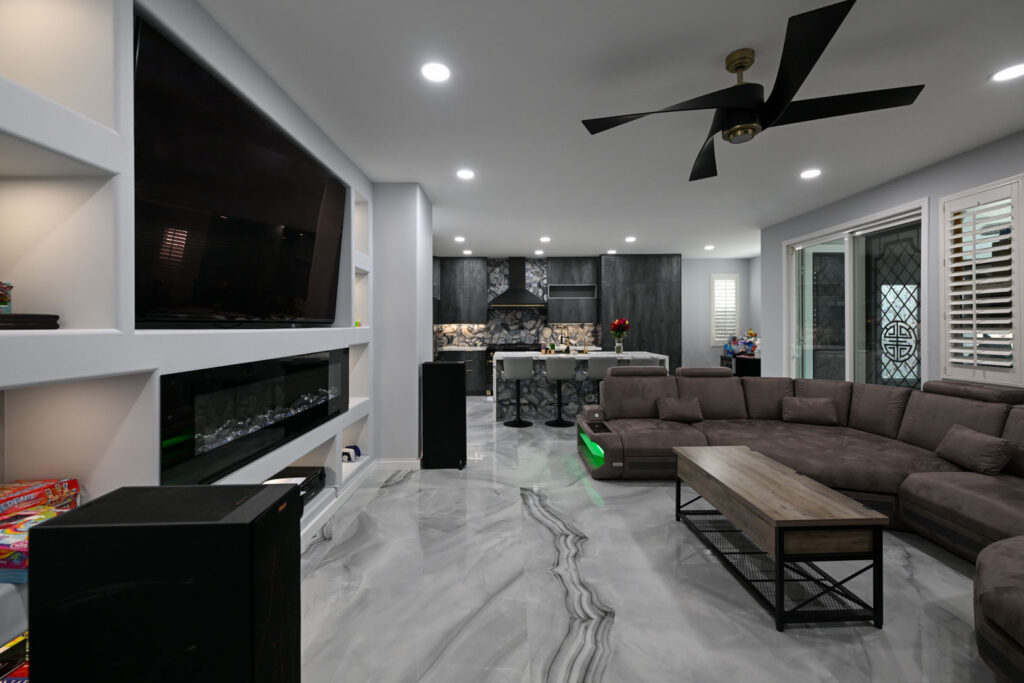Did you know that the average person spends about 90% of their time indoors? With so much time spent at home, it’s crucial to create a space that not only looks great but also functions well. When it comes to designing your dream home, the floor plan is a key element that can make or break the overall feel of your space. Whether you’re starting from scratch or renovating an existing space, these floor planning tips will help you maximize both style and functionality in your home design.
Essential Floor Plan Tips
Family Needs
Identify the unique needs of your family when designing a floor plan. Consider factors such as the number of family members, their ages, and any specific requirements they may have. This will help you create a functional layout that caters to everyone’s needs.
Consider the flow of movement between rooms to ensure ease of daily activities. A well-thought-out floor plan should allow for seamless transitions between spaces, making it convenient for family members to move around the house.
Future Changes
Plan for future changes in lifestyle or family dynamics. As families grow and evolve, so do their needs. Design your floor plan with flexibility in mind to accommodate any changes that may arise in the future.
Make sure the final floor plan reflects your current lifestyle while also being adaptable to potential modifications down the line. This approach ensures that your home remains functional and relevant for years to come.
Incorporate elements that can easily be altered, such as movable partitions or convertible spaces, to allow for small modifications without major renovations. This flexibility will save you time and money in the long run.
Longevity and Sustainability
When making layout plan decisions, think about the long-term sustainability of your design choices. Opt for a layout that not only meets your current needs but also has the potential to adapt to future requirements.
Consider how different areas of your home, such as bedrooms, living spaces, and kitchen, can be utilized efficiently. Maximizing the use of every square foot ensures that no space goes to waste and helps you make the most out of your floor plan.
Room Placement Guidelines
Noise Control
When planning your dream home, evaluate the proximity of bedrooms to common areas for noise control. Placing bedrooms away from high-traffic zones can ensure a peaceful environment conducive to rest and relaxation. Consider positioning bedrooms further from living rooms or entertainment spaces to minimize disturbances from guests or family members moving around.
Tranquility Designation
To create a serene living space, designate private areas such as bedrooms or study rooms away from high-traffic zones. This separation allows for moments of tranquility and privacy amidst the daily activities within the house. By placing private spaces strategically, you can enjoy a peaceful retreat within your home.
Convenience Access
Ensure easy access to essential rooms like bathrooms and kitchens for convenience. Positioning these rooms in central locations can streamline daily activities and enhance functionality. Guests will appreciate clear pathways to common areas, while family members can easily navigate through the house for various needs.
Master Bedroom Design
Separate Wing
Create a separate wing for the master bedroom to enhance privacy. This design element ensures that the master suite is secluded from the rest of the house. It provides a retreat-like feel, offering tranquility and exclusivity to the homeowners.
Incorporate windows that allow natural light without compromising privacy. By strategically placing windows in the master bedroom, you can invite ample sunlight while maintaining a sense of seclusion. This balance creates a bright and airy atmosphere without sacrificing intimacy.
Personal Preferences
Choose a layout that accommodates personal preferences, such as a sitting area. Including a cozy sitting space within the master bedroom adds functionality and comfort. It provides a designated area for relaxation, reading, or enjoying morning coffee, enhancing the overall functionality of the room.
Pros:
- Enhances privacy and exclusivity
- Allows natural light while maintaining privacy
- Accommodates personal preferences for added comfort
Cons:
- Requires additional space for a separate wing
- Balancing natural light and privacy can be challenging
Family Room and Kitchen Proximity
Social Interaction
Position the family room close to the kitchen to encourage social interaction during meals. Placing these spaces adjacent to each other facilitates easy communication between family members and guests. This setup allows for seamless interactions while preparing meals or enjoying them together.
Minimizing Distractions
Design the family room layout strategically to minimize distractions from kitchen activities. Consider incorporating features like soundproofing materials or visual barriers to create a separation between the two areas. This design ensures that individuals in the family room can engage in activities without being disrupted by noise or movements from the kitchen.
Maintaining Peaceful Atmosphere
Ensure adequate separation between the family room and the kitchen to maintain a peaceful atmosphere when needed. While proximity is essential for socializing, having a buffer zone between these spaces can help create a relaxing environment when desired. This separation allows for different activities to occur simultaneously without interfering with one another.
Laundry Room Location
Proximity
Place the laundry room near bedrooms to simplify the process of collecting and washing dirty clothes. This location choice ensures easy access for dropping off laundry items, especially those used daily.
Incorporate storage solutions in the laundry area to enhance organization and efficiency. Utilize shelves, cabinets, or baskets to store detergents, fabric softeners, and cleaning supplies neatly. This streamlines chores and reduces clutter in the space.
Design
Design the laundry space to be both functional and discreet from living areas. Consider adding a folding station or countertop for sorting and folding clothes. Installing a sink can also be beneficial for hand washing delicate items or pre-treating stains.
- Place laundry room near bedrooms
- Incorporate storage solutions
- Design for functionality and discretion

Mudroom Placement
Situate Near
Place the mudroom close to the garage or back entrance for convenience and functionality. This location allows easy access for family members coming in with muddy shoes.
Practical Design
When designing your mudroom, prioritize storage solutions for shoes and outerwear. Incorporating shelves, cabinets, and hooks can help keep the area organized and clutter-free.
Seamless Transitions
Ensure that the mudroom flows smoothly into the kitchen for practicality. This design choice facilitates easy transitions between outdoor and indoor spaces, especially during busy mornings.
By situating the mudroom strategically, you can effectively manage the mess that comes with a muddy family. The proximity to the garage or back entrance ensures that dirt and grime stay contained in one area.
Pros:
- Convenient access for family members entering with muddy shoes
- Helps in maintaining an organized and clutter-free space
- Facilitates smooth transitions between outdoor and indoor areas
Cons:
- May require additional space allocation within the floor plan
- Regular maintenance needed to keep the area clean and tidy
Ideal Powder Room Spot
Entrance Proximity
Position the powder room near the entrance to your home for easy access and convenience, especially for guests. This strategic placement ensures that visitors can freshen up quickly upon arrival without having to venture deep into the house.
Privacy Consideration
Tuck the powder room away from dining areas or living spaces where guests may be congregating. This separation maintains privacy during gatherings and prevents interruptions or awkward moments while entertaining friends and family.
Layout Design
Design the layout of the powder room to allow for seamless access without disrupting the flow of the main living space. Consider incorporating a small hallway or foyer leading to the powder room to create a sense of transition and privacy for users.
When positioning your powder bathroom, think about its proximity to high-traffic areas in the house. Placing it near the entrance ensures easy access for guests without intruding on more private spaces.
Consider creating a dedicated space for the powder bath that is easily accessible but discreetly tucked away from the main living areas. This design choice enhances guest comfort and overall functionality.
Incorporating smart plumbing solutions in your bathrooms can streamline maintenance and enhance efficiency. Opt for fixtures that are both aesthetically pleasing and practical for everyday use.
Dining Room Light Considerations
Location
Select a location for the dining room that avoids harsh afternoon sunlight. Placing it on the east side of your house can ensure softer morning light, creating a cozy atmosphere for breakfast.
Window Treatments
Incorporate window treatments to control light levels during meals. Opt for curtains or blinds that are adjustable to regulate the amount of natural light entering the room based on the time of day.
Natural Light Ambiance
Consider the ambiance created by natural light for a pleasant dining experience. Soft, diffused light can enhance the mood and aesthetics of your dining area, making meals more enjoyable.
Avoiding Pass-Through Living Rooms
Design Circulation-Friendly Spaces
Design living areas to encourage smooth circulation by avoiding pass-through living rooms. Formal living rooms can hinder flow within a house, impacting the overall lifestyle experience. To overcome this, create clear pathways that don’t disrupt the movement between different areas.
To enhance comfort and functionality, focus on creating designated spaces for relaxation and conversation. By separating these areas from pass-through zones, you can ensure a more enjoyable living experience. Consider incorporating elements like area rugs, lighting fixtures, or decorative screens to delineate these spaces effectively.
Furniture Placement for Improved Flow
Strategic furniture placement plays a crucial role in guiding movement and enhancing the flow throughout your home. Arrange furniture in a way that directs traffic smoothly through the space, avoiding obstacles or blockages that disrupt the natural circulation patterns. By optimizing furniture layout, you can create a harmonious environment that promotes both comfort and functionality.
Pros:
- Enhanced circulation and flow within the living spaces
- Improved comfort and functionality for everyday living
Con:
- Potential challenges in finding the right balance between aesthetics and practicality
Conclusion
Your dream home’s floor plan is the blueprint for your daily life, shaping how you move through and interact with the space. By carefully considering room placements, design elements, and practical considerations, you can create a home that not only looks stunning but also functions seamlessly to support your lifestyle. Remember, thoughtful planning now can save you from future frustrations and renovations.
As you embark on designing your dream home, keep these floor planning tips in mind to ensure every square foot enhances your living experience. Whether it’s optimizing room layouts for better flow or strategically placing essential spaces for convenience, each decision contributes to a harmonious and functional home. Your dream home is within reach—make every design choice count!
Design Your Perfect Floor Plan with Red White & Blue Construction!
Thinking about redesigning your floor plan? Your search ends here! Embark on an exciting journey to transform your Lafayette, CA home into the living space you’ve always dreamed of. With Red White & Blue Construction, every inch of your floor plan becomes a harmonious blend of beauty and functionality. Imagine innovative layouts that maximize your space’s potential, creating a natural flow that enhances both comfort and style. Whether you’re looking to optimize your current floor plan or dreaming up something entirely new, we’re here to bring your vision to life.
Our stellar reputation across the Bay Area speaks to our unwavering commitment to excellence, precision, and the highest standards of craftsmanship. We’re not just licensed contractors; we’re the creative minds behind your ideal living space. With transparent pricing and a client-first approach, you’re not just planning a floor—you’re laying the foundation for a whole new lifestyle. Choose Red White & Blue Construction and turn your home into a masterpiece. Design Your Perfect Floor Plan and connect with us today!
Disclaimer
The materials available on this website are for informational and entertainment purposes only and not to provide advice. You should obtain advice concerning any particular issue or problem from a professional. You should not act or refrain from acting based on any content included in this site without seeking legal or other professional advice. The information presented on this website may not reflect the most current building developments. No action should be taken in reliance on the information on this website. We disclaim all liability concerning actions taken or not taken based on any or all of the contents of this site to the fullest extent permitted by law.





